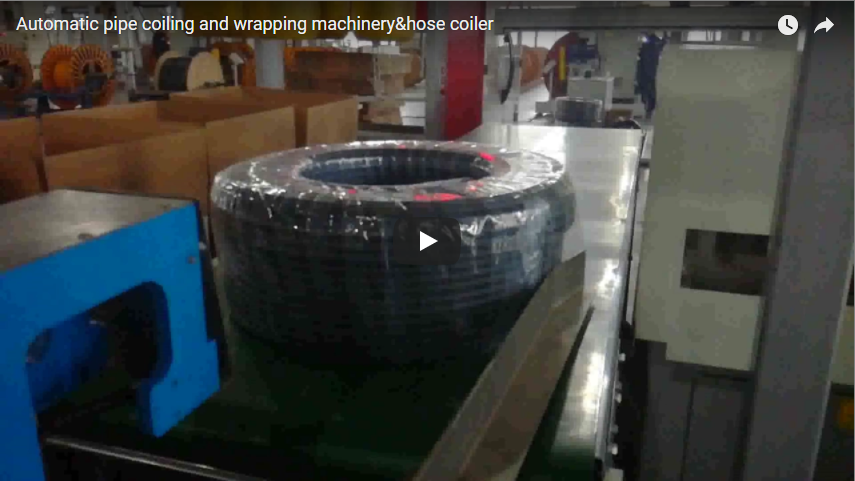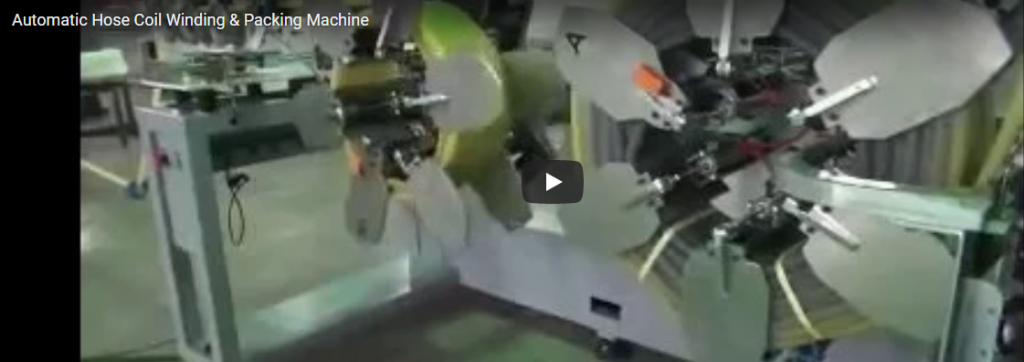Enhancing Pancake Coil Packaging: The Role of Automated Side Sealing and Shrinking Technology
The efficient and secure packaging of industrial components like pancake coils, particularly those made from copper or other sensitive materials, is crucial in modern manufacturing and distribution. Ensuring product integrity from the factory floor to the end-user requires robust packaging solutions. Automated side sealing and shrink wrapping machines represent a significant technological advancement in addressing this need, offering enhanced protection, throughput, and operational efficiency, particularly vital in sectors such as electrical transformer production and HVAC component manufacturing.
Understanding the Challenge: Packaging Pancake Coils
Pancake coils, characterized by their flat, spirally wound structure, present unique packaging challenges. They require protection from:
- Environmental Factors: Dust, moisture, and contaminants can compromise electrical properties or material integrity.
- Physical Damage: Scratches, dents, or deformation during handling, storage, and transit can render the coil unusable.
- Unraveling: Maintaining the tightly wound configuration is essential.
Traditional packaging methods can be labor-intensive and may not provide a consistently secure and sealed enclosure.
The Side Seal Shrink Wrap Process Explained
Unlike traditional L-bar sealers that create seals on three sides requiring the machine to cycle for each package, side sealing systems offer a continuous sealing process along the length of the product. This technology typically involves:
- Infeed Conveying: Coils are fed into the machine, often synchronized with upstream production processes.
- Film Inversion: A roll of flat or center-folded shrink film is precisely draped around the incoming coil.
- Side Sealing: A continuously operating heated blade or wheel creates a longitudinal seal along the side of the package as it moves through the machine. This allows for packaging products of varying or infinite lengths without stopping the motion for sealing. Patent literature, such as concepts seen in automated packaging systems (e.g., related to continuous motion sealing mechanisms), often highlights the ingenuity behind reducing cycle time through such designs.
- Cross Sealing: An end-sealer bar performs transverse seals between individual coils or at the end of a single wrapped coil, separating it from the next.
- Shrink Tunnel Transition: The loosely wrapped coil immediately transfers into a heated shrink tunnel.
- Heat Application: Controlled recirculation of hot air within the tunnel causes the polyolefin (POF) or polyethylene (PE) shrink film to conform tightly around the coil. Research into polymer science dictates precise temperature and airflow control (often detailed in machine specifications) to ensure uniform shrinkage without damaging the coil or compromising film integrity.
Key Technological Features and Operational Advantages
Modern side sealing and shrinking machines incorporate features grounded in engineering principles and material science, delivering tangible benefits:
Advanced Sealing Technology
- Continuous Motion Sealing: Enables higher throughput (measured in packs per minute) compared to intermittent L-bar sealers, crucial for high-volume production lines.
- Precision Seal Temperature Control: Ensures strong, consistent seals across various film types and thicknesses, minimizing burn-through or weak spots.
Optimized Shrink Tunnel Performance
- Variable Airflow and Temperature Control: Allows fine-tuning for different film types and product sensitivities, ensuring a tight, wrinkle-free finish without overheating delicate components like copper coils. Technical papers on heat transfer in shrink tunnels often emphasize the importance of uniform airflow patterns.
- Energy Efficiency: Modern tunnel designs often incorporate insulation and air recirculation systems to reduce energy consumption, a key consideration highlighted in industrial efficiency reports.
Automation and Integration
- PLC Control with HMI: Programmable Logic Controllers (PLCs) and Human-Machine Interfaces (HMIs) allow for recipe storage (pre-set parameters for different coil sizes), diagnostic feedback, and easier operator control, reducing setup times and potential errors.
- System Integration: Designed for seamless integration into automated production lines, communicating with upstream and downstream equipment for optimized workflow.
Enhanced Product Protection and Presentation
- Complete Enclosure: The process creates a fully sealed package, providing superior protection against environmental contaminants compared to banding or boxing alone.
- Improved Stability: The tightly shrunk film helps maintain the coil's shape and prevents unraveling during handling.
- Professional Aesthetics: A clear, taut wrap offers excellent product visibility and a professional appearance.
Core Benefits for Manufacturers and Distributors
Implementing automated side sealing and shrinking technology translates to significant operational gains:
- Increased Throughput: Continuous motion systems dramatically increase packaging speed.
- Reduced Labor Costs: Automation minimizes manual handling requirements.
- Material Savings: Precise film delivery systems optimize usage and reduce waste.
- Consistent Package Quality: Automated control ensures repeatable, high-quality results.
- Enhanced Product Integrity: Reduced risk of damage translates to lower rejection rates and improved customer satisfaction.
Typical Technical Specifications
While varying by model and manufacturer, key parameters often include:
- Seal Type: Continuous motion side seal; Hot knife or rotary wheel options.
- Maximum Package Size (L x W x H): Varies widely, e.g., Length (infinite potential), Width (up to 600mm+), Height (up to 250mm+).
- Packaging Speed: Up to 60+ packs per minute, depending on coil size and film type.
- Film Compatibility: Polyolefin (POF), Polyethylene (PE) center-folded or flat film.
- Control System: PLC with touchscreen HMI.
- Power Requirements: Typically 220V/380V, 3-Phase.
- Construction: Industrial-grade steel frame and components for durability.
Conclusion: A Strategic Investment in Packaging Efficiency
For industries handling pancake coils and similar challenging products, automated side sealing and shrink wrapping systems offer a compelling solution. They move beyond basic protection to deliver measurable improvements in speed, efficiency, labor utilization, and package quality. The integration of advanced sealing mechanisms and precise shrink control, often drawing from principles outlined in packaging research and engineering patents, makes this technology a strategic investment. Selecting the right equipment, like a specialized coil shrinking machine tailored for specific coil dimensions and production demands, is key to unlocking these benefits and maintaining a competitive edge in today's demanding industrial marketplace.






